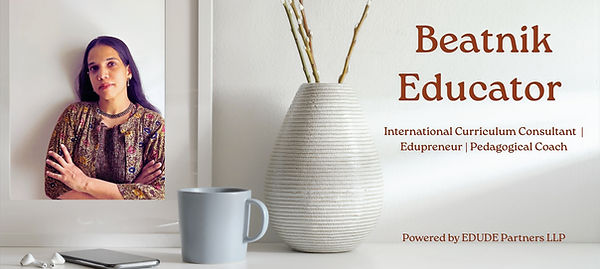Answering the Unanswered Questions : What It Mean To Say That A School Is Doing Well?
- Pallavi Sharma
- Jun 11, 2020
- 3 min read
Updated: Oct 30
Elliot W. Eisner (2016) raise pertinent rhetorical questions in his piece entitled What Does It Mean to Say a School Is Doing Well? While he answers some questions, he often leaves most questions unanswered for the reader to introspect and mull over. The purpose of this paper is to select three of such unanswered questions and expand on them. The aim has been to develop answers to these questions on the basis of personal experience of being an International Baccalaureate (IB) Middle Years Programme (MYP) educator and at the same time a product of a public education system that has a been a matter of public discourse among the national policymakers, intellectual community and dissent voices for years now.

Bridging Classroom Learning with Real-World Applications: The Role of Experiential Education
The paper highlights the question posed by Eisner (2016) regarding the connection between classroom learning and real-world application, emphasising the concept of "transfer of learning." Eisner argues that education often focuses on test scores rather than real-world relevance, suggesting that this approach may ultimately be counterproductive. In some countries, education prioritises rote learning and assessments, but innovative teachers are beginning to integrate experiential learning to make education more applicable to real life. The IB curriculum, for example, employs experiential learning techniques and encourages community action, as seen in initiatives like India's first Fair Trade School, Vidyashilp Academy. The IB curriculum's Global Contexts help students connect classroom learning to the world, fostering understanding and 21st-century skills. Teachers often use Project-Based Learning (PBL) and other methods to bridge classroom learning with real-world applications, allowing students to drive their own inquiry while developing essential skills.
Active Engagement and Student Choice in IB MYP Assessments
David N. Perkins (2014) states, “Learning is made meaningful when it is Worthy of Learning.” Eisner (2016) questions, “Do students participate in the assessment of their own work? If so, how?” In many public schools, students are passive in assessments, focusing on high test scores. In contrast, IB MYP students actively engage in their learning and assessment, determining both content and method to gauge progress. For example, in the Personal Project, Grade 9 & 10 students undertake a year-long inquiry, creating success criteria to evaluate their outcomes. Teachers use self-assessment checklists, peer assessments, and reflections to foster self-improvement. Eisner advocates for diverse learning representations, aligning with the IB’s emphasis on Student Choice and Voice, which is recognised by stakeholders. Learning is often presented through role-plays, poems, blogs, events, exhibitions, and Student-Led Conferences, ensuring inclusivity and individual potential.
Enhancing Teacher Empowerment and Professional Development in Global Education
Eisner (2016) questions professional discourse in teaching and emphasises addressing teachers' real needs. UNESCO (2016) states that student learning quality depends on teaching quality, yet disparities exist in educational approaches. Many teachers, especially in developing regions, feel disconnected due to limited professional development. In contrast, some private schools prioritise teacher empowerment through initiatives like Master Classes and Professional Learning Networks. Globally, teachers have adapted to the pandemic by embracing online and Blended Learning, sharing best practices across platforms.
In conclusion, the goal is not to find a single answer to Eisner's (2016) questions, as responses vary based on individual experiences, country-specific studies, and literature. Raising questions is crucial, especially during rapid changes, to maintain discourse on curriculum and education.
References
Perkins, D. N. (2014). Future-wise: educating our children for a changing world. San Francisco, CA: Jossey-Bass.
Eisner, E (2016). What does it mean to say a school is doing well?. In Flinders, D. J., & Thornton, S. J. (Eds.), The Curriculum Studies Reader, Fourth Edition (pp.297-305). New York, NY: Routledge.
Iborganization. (n.d.). MYP curriculum. Retrieved from https://www.ibo.org/programmes/middle-years-programme/curriculum/
UNESCO International Bureau of Education (UNESCO-IBE). (2016). What makes a quality curriculum? Current and Critical Issues in Curriculum and Learning (2), pp.1-41.
[1] Vidyashilp Academy: The Fairtrade School. (n.d.). Retrieved from https://vidyashilp.com/fairtrade-school.php [2] How Pineapple Charts Revolutionise Professional Development. (2019, July 26). Retrieved from https://www.cultofpedagogy.com/pineapple-charts/ [3] Dans, E. (2020, April 13). The Coronavirus Pandemic Has Unleashed A Revolution In Education: From Now On, Blended Learning Will Be The Benchmark. Forbes. Retrieved from
_edited.jpg)




Comments